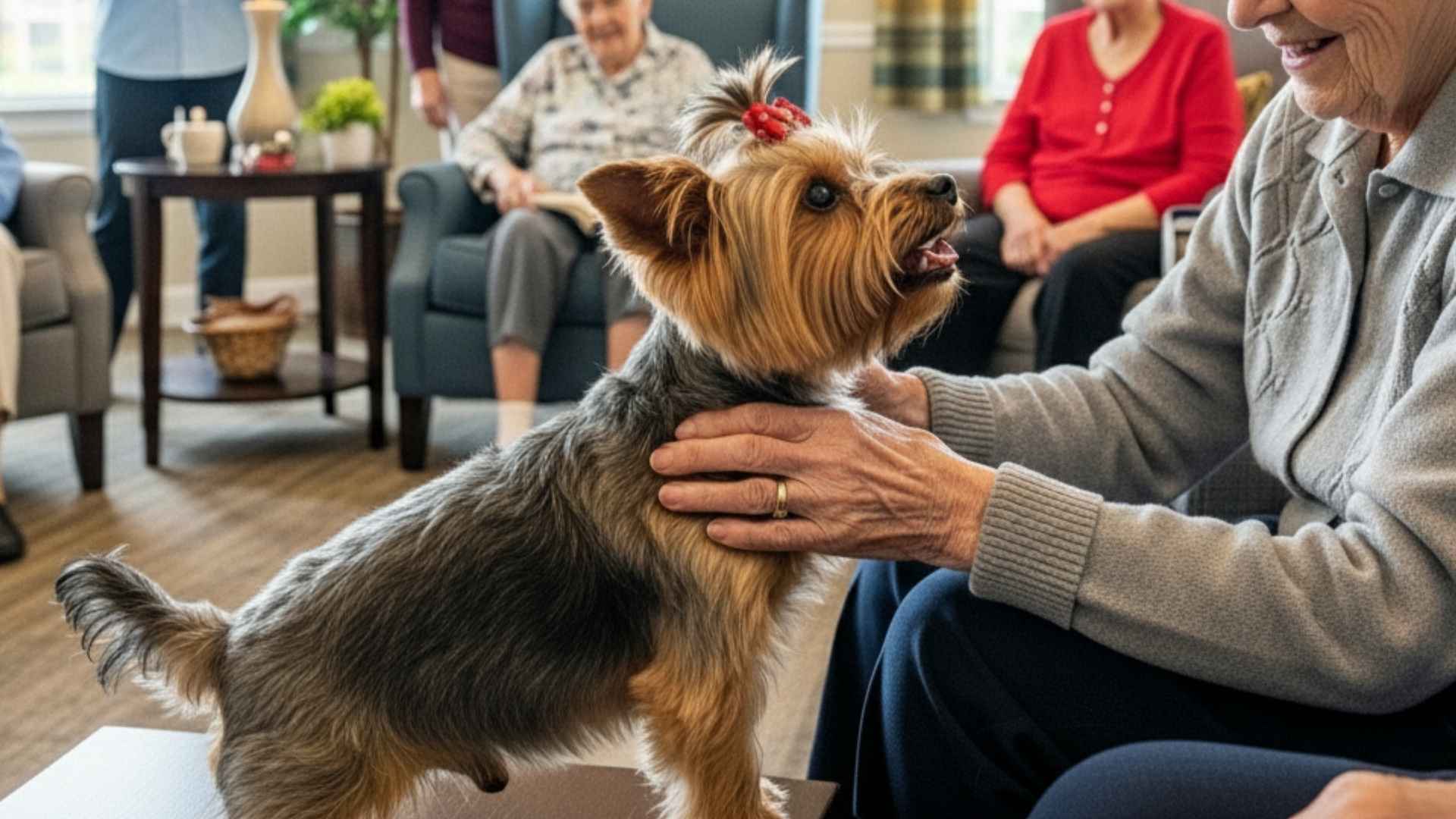Independent living offers seniors connection, purpose, and community—but the presence of a loyal dog can make life even more fulfilling.
The right canine companion brings unconditional love, comfort, and joy while encouraging light physical activity and daily routine. For many older adults, a gentle wagging tail and warm presence turn an ordinary day into something truly special.
Research shows that pet ownership among seniors continues to rise, with nearly one in ten adults aged 50 to 80 adopting a new pet between 2021 and 2022. Studies also link dog companionship to reduced loneliness, improved heart health, and enhanced mobility.
Even brief walks with a small or medium-sized breed can contribute to better overall well-being and fewer healthcare visits.
In this article, we highlight the best dog breeds for senior living communities—calm, affectionate, and easygoing companions that adapt beautifully to apartment living and provide the perfect mix of love, purpose, and companionship.
Best Dog Breeds for Senior Living Communities
1. Pug
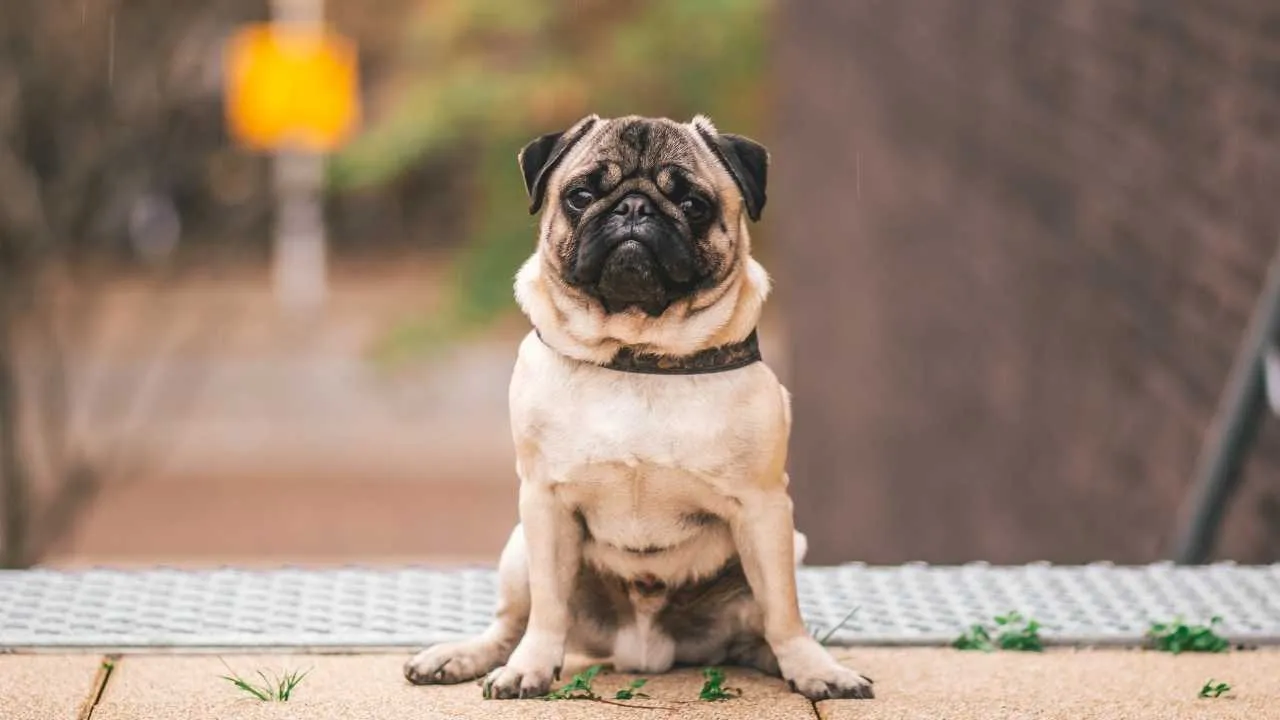
Also known as the Chinese Pug or Mops, the Pug is a compact, affectionate breed with a big personality in a small frame.
According to the American Kennel Club, the Pug, once a mischievous companion to Chinese emperors and later the cherished mascot of Holland’s royal House of Orange, is now a beloved small yet sturdy breed adored by millions around the world.
Pugs thrive on human interaction and are happiest when close to their owners, whether snuggled on a lap or following them from room to room. Their calm yet playful demeanor brings warmth and laughter, ideal for seniors seeking gentle companionship without excessive activity.
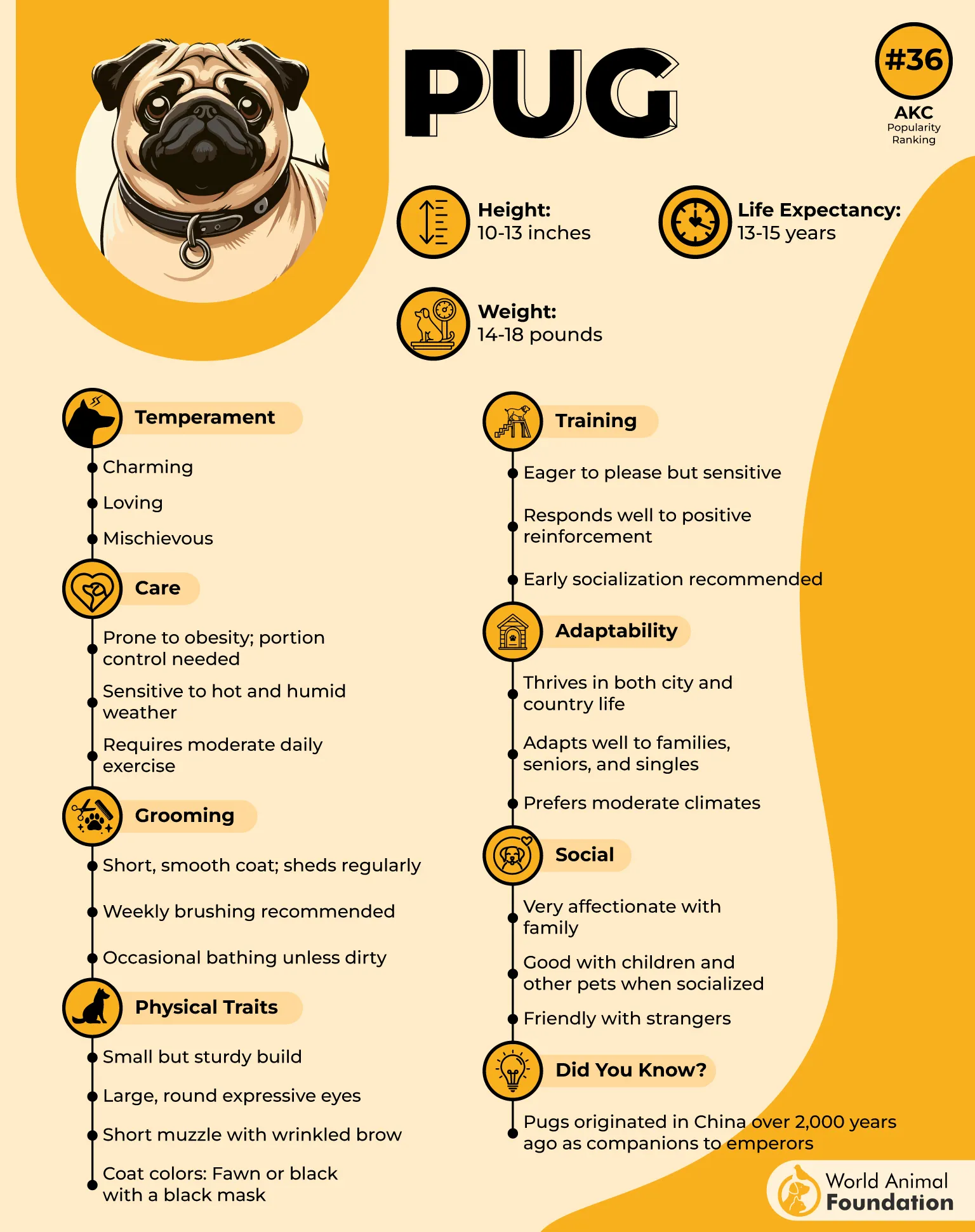
This small breed requires minimal grooming thanks to its short coat, and short daily walks are enough to keep it healthy and content. However, due to its flat face, the Pug should be kept cool and not overexerted.
Affectionate, sociable, and intelligent, Pugs adjust well to apartment living and quiet routines—offering love, comfort, and low-maintenance care.
Fun Fact: Napoleon’s wife, Josephine, used her Pug, Fortune, to smuggle secret messages while imprisoned.
2. Shih Tzu
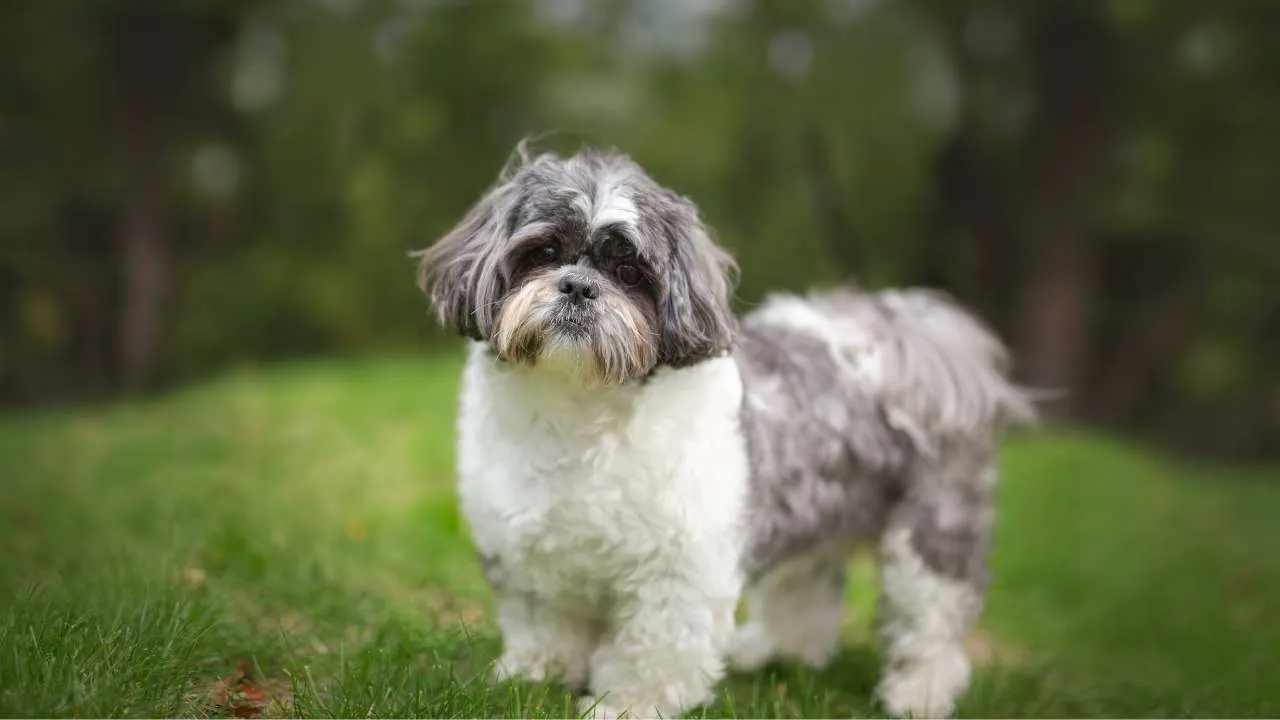
The Shih Tzu, also known as the “Little Lion Dog,” is a charming and affectionate companion with roots in Chinese royalty. According to PetMD, the Shih Tzu is a small Tibetan toy breed originally bred to serve as a loyal and affectionate companion.
Recognized by its flowing coat and warm, expressive eyes, this toy breed thrives in close companionship with its owners, making it an ideal fit for senior living communities.
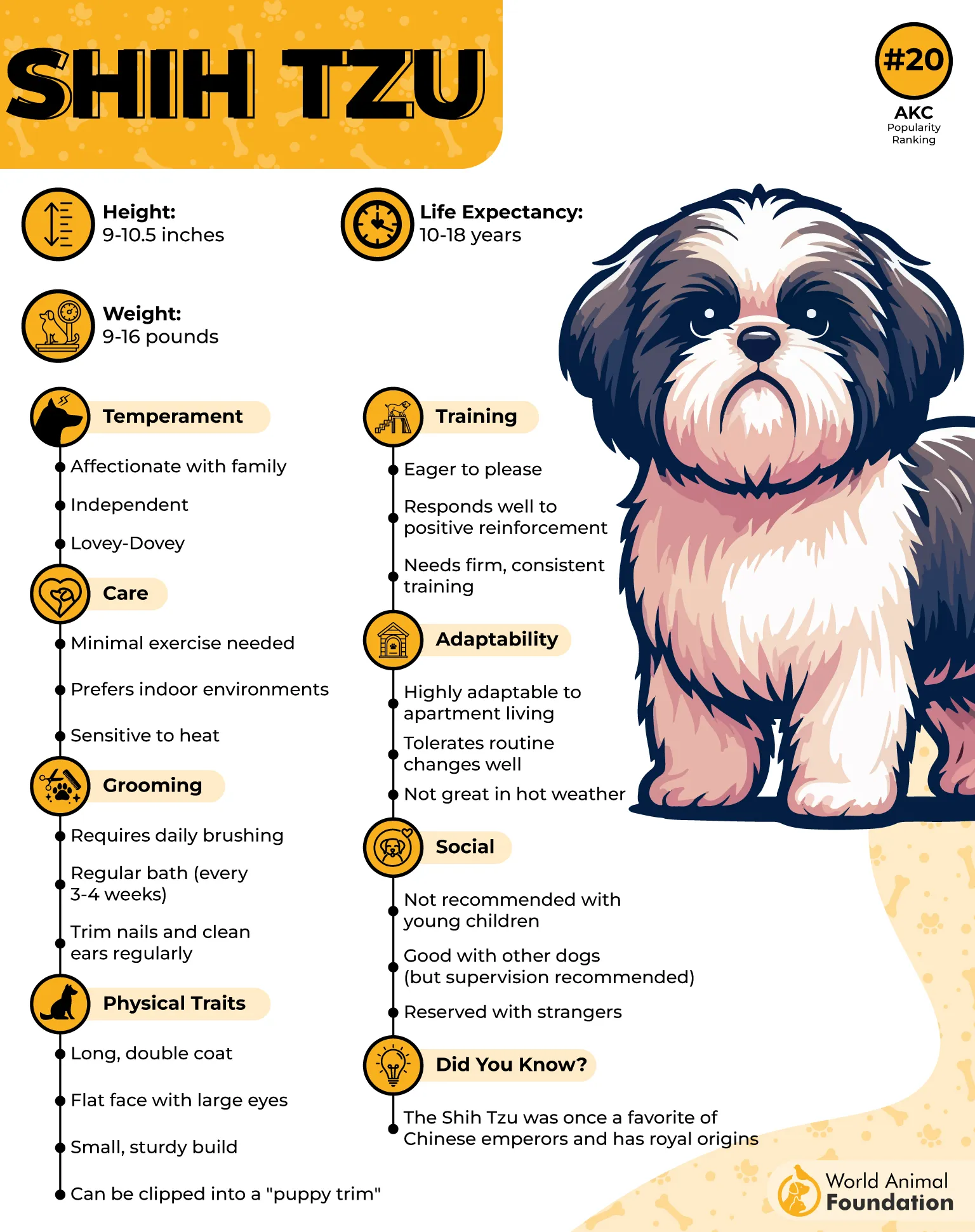
Gentle and easygoing, Shih Tzus prefer a relaxed routine filled with short walks, cuddle sessions, and calm indoor play.
Their adaptability allows them to flourish in small apartments or retirement homes without the need for extensive exercise. Despite their small size, they have a confident personality and quickly form close bonds with their caregivers.
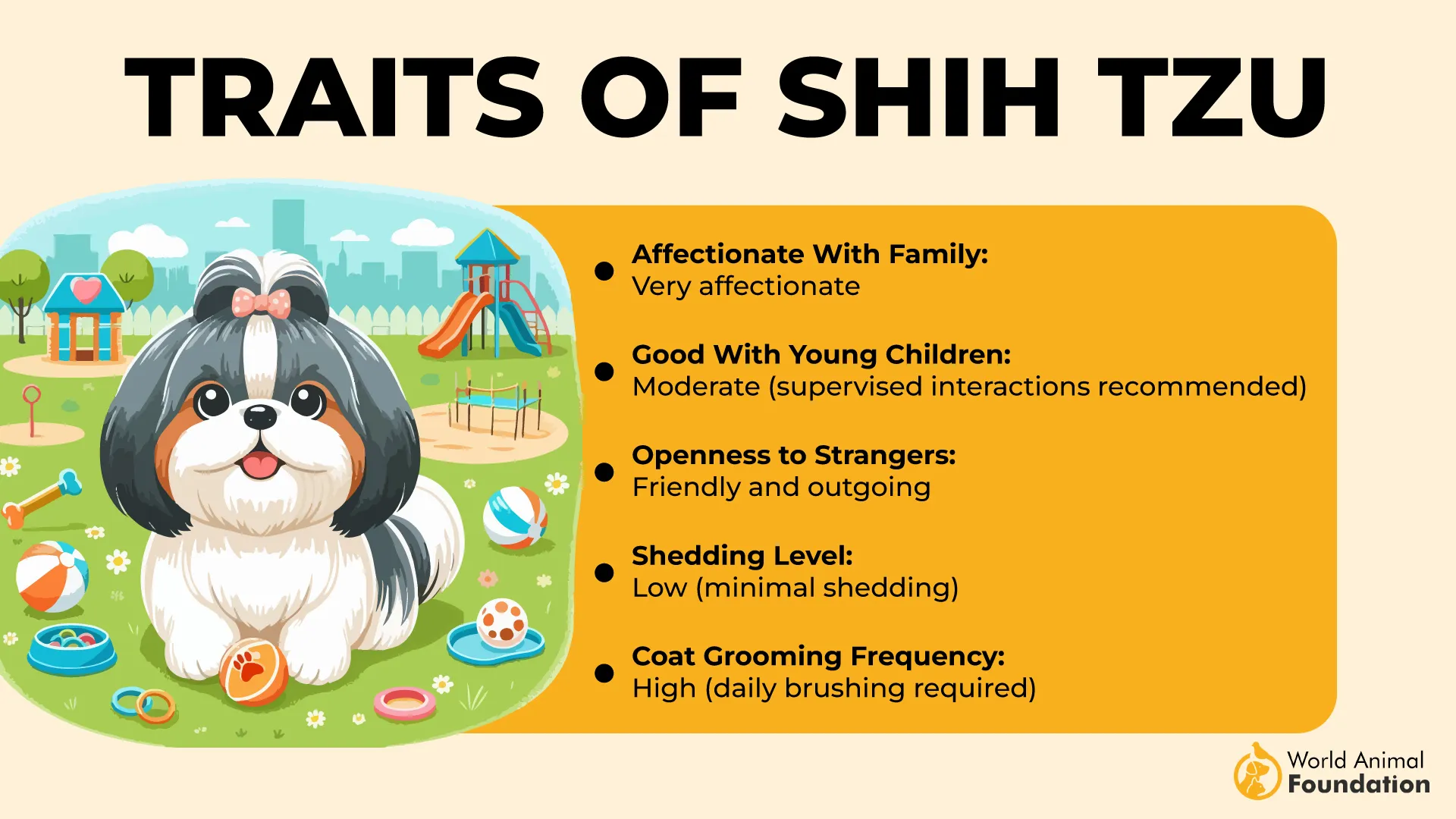
These dogs are also sociable, getting along well with other pets and visitors, provided they receive early training and positive socialization. Their low-shedding double coat requires regular brushing to prevent tangles, but grooming can be an enjoyable bonding activity for seniors.
Fun fact: “Shih Tzu” translates to “little lion” in Mandarin—a fitting name for such a regal yet gentle breed.
3. Yorkshire Terrier
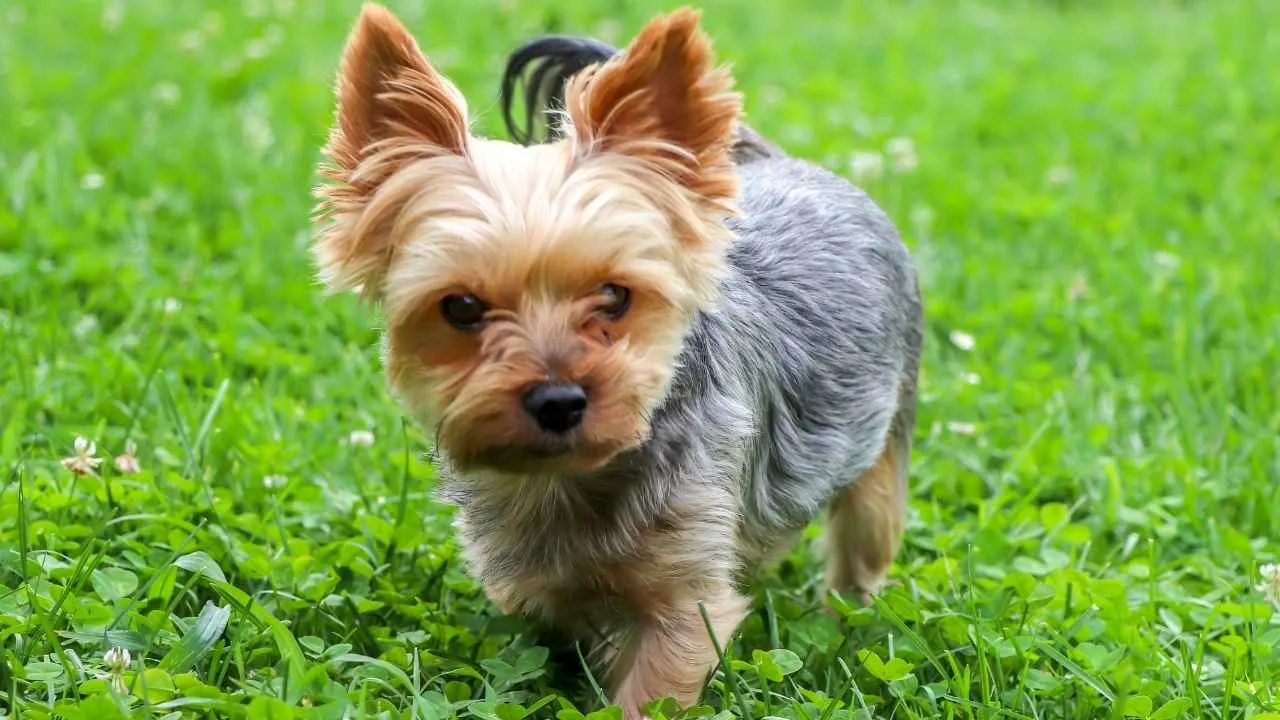
The Yorkshire Terrier, affectionately called the Yorkie, is a toy-sized breed with a big personality wrapped in a silky, flowing coat. According to WebMD, the Yorkshire Terrier is a tiny breed known for its abundant energy and lively disposition.
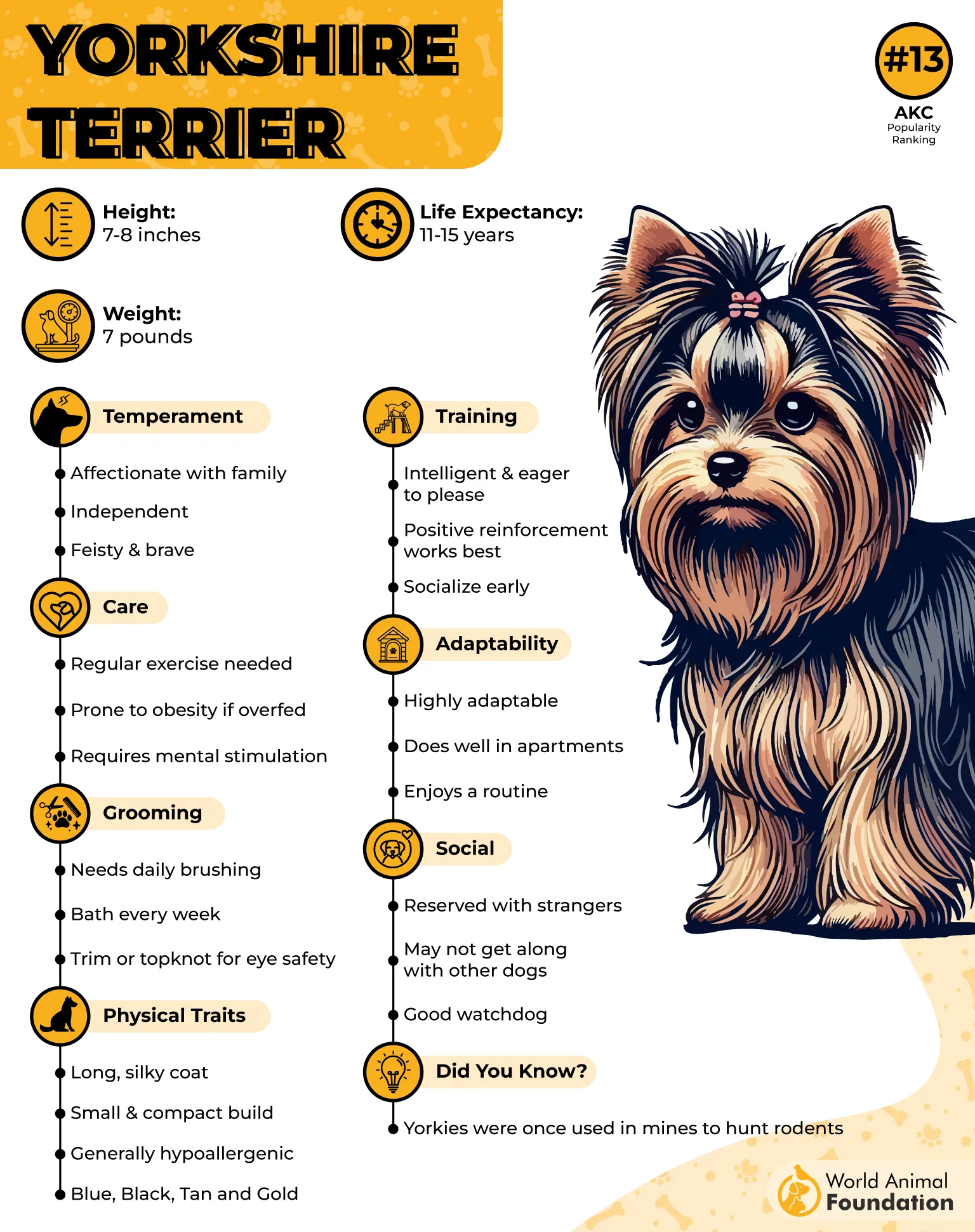
Yorkies are easy to carry and perfectly suited for senior living communities. Their playful yet affectionate demeanor ensures constant companionship, while their alert nature provides an extra sense of security at home.
Despite their size, Yorkies are confident and spirited, often surprising owners with their boldness and quick intelligence. Their low-shedding coat resembles human hair, requiring regular brushing but minimal shedding—ideal for those seeking tidiness.
Seniors can also opt for a “puppy cut” to simplify maintenance without compromising style. With proper training and short daily walks, Yorkies adapt beautifully to smaller homes or apartments.
Fun fact: this breed ranks among the top companion dogs for older adults thanks to its loving temperament and portable size.
4. Maltese
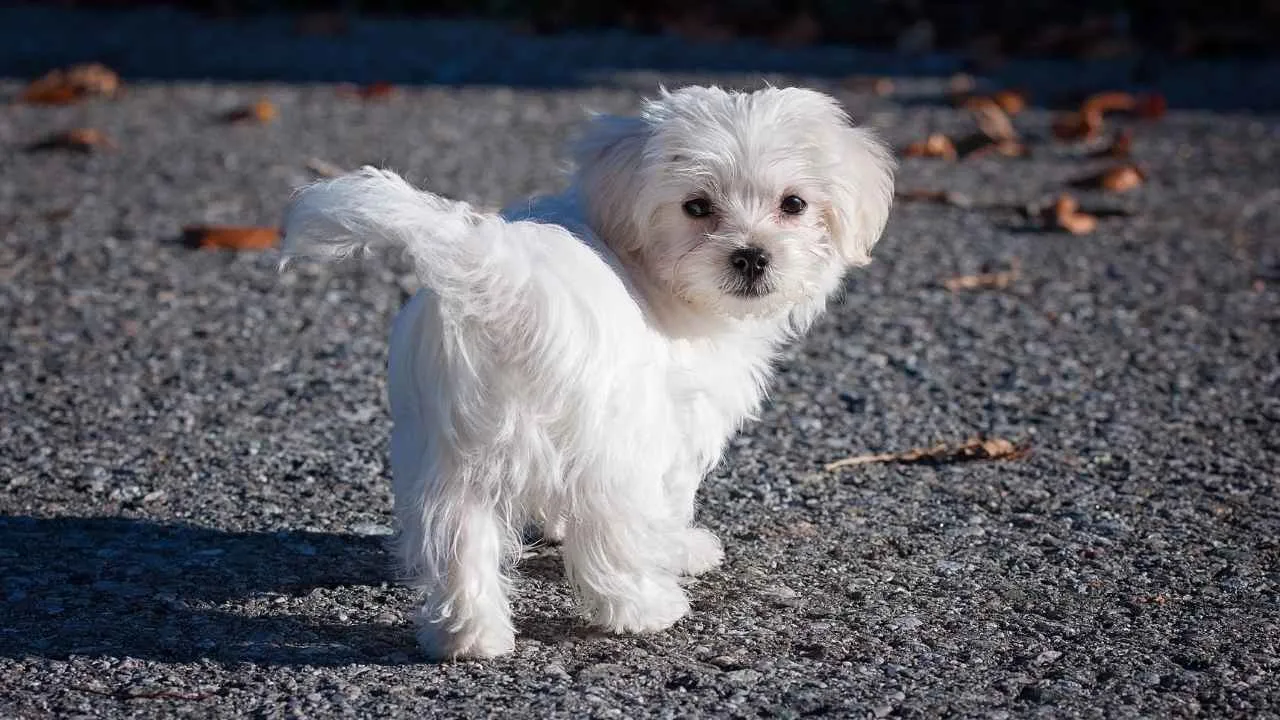
The Maltese, also known as the Maltese Lion Dog, is a graceful toy breed admired for its silky white coat and affectionate nature. Originating from the Mediterranean island of Malta, this ancient breed has long been a favorite among royalty and companions alike for its charm and devotion.
Perfect for senior living communities, the Maltese thrives on companionship and easily bonds with its owner, offering unwavering loyalty and emotional comfort. Its small size makes it easy to handle, while its gentle personality brings warmth and peace to quiet environments.
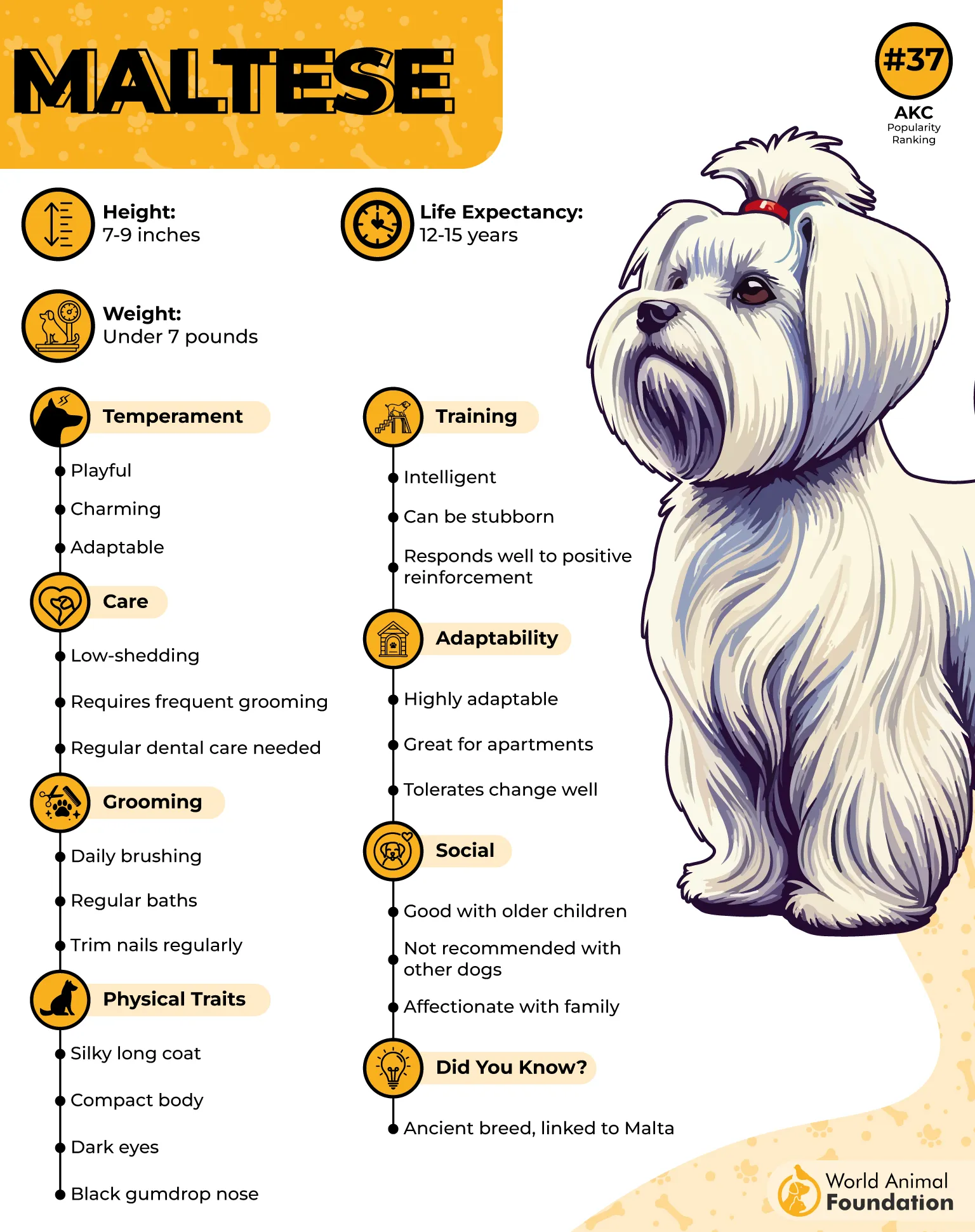
These dogs require minimal exercise—short walks and a few minutes of play are enough to keep them healthy and content.
However, their long, flowing coat needs daily brushing and periodic grooming to maintain its luster. Despite their delicate appearance, Maltese dogs are alert and confident, often serving as tiny yet reliable watchdogs.
Fun Fact: The Maltese is believed to be one of Europe’s oldest toy breeds, with roots tracing back nearly 3,000 years.
5. French Bulldog
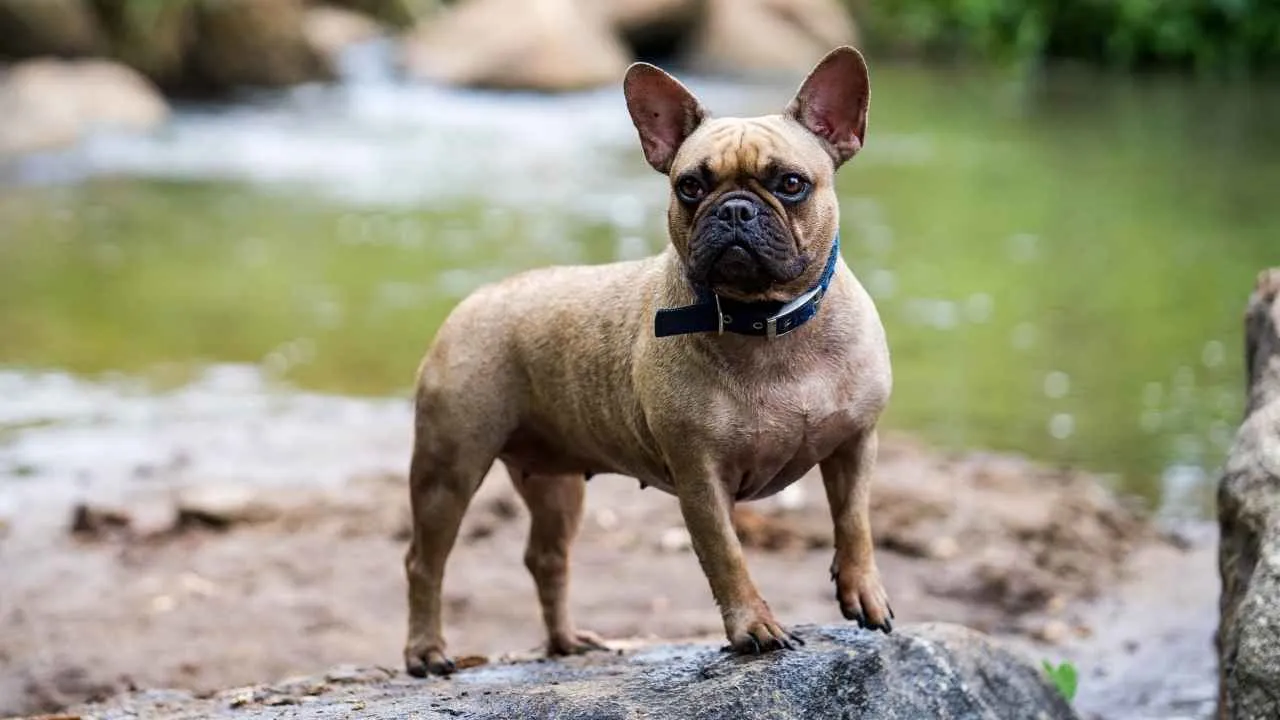
Also known as the “Frenchie,” the French Bulldog is a charming, compact companion perfectly suited for senior living. With its trademark bat-like ears, sturdy frame, and affectionate nature, this breed combines playfulness with an easygoing temperament.
Frenchies are light enough to handle yet strong enough to keep up on short strolls.
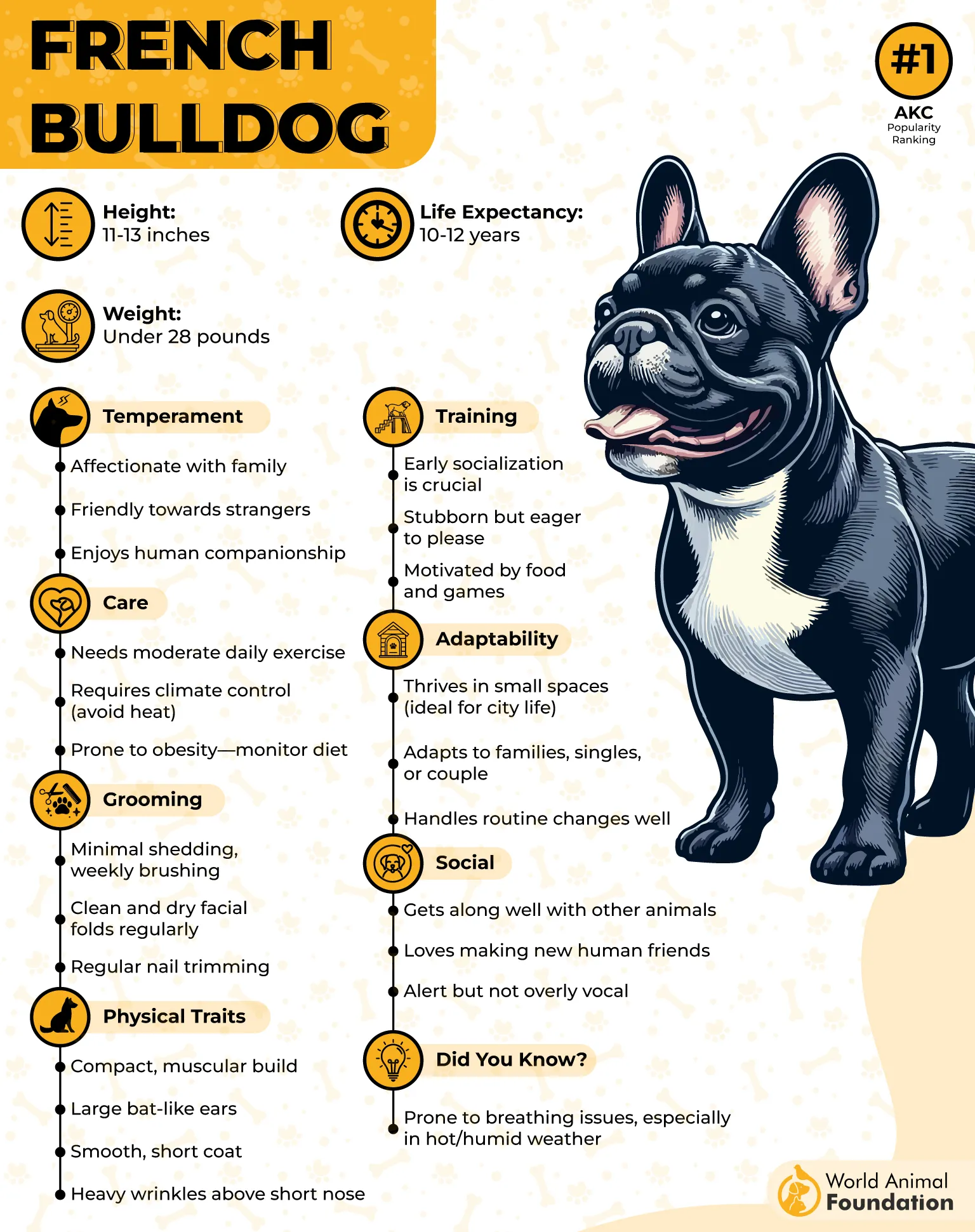
Their gentle demeanor and love of human connection make them wonderful emotional support dogs. They thrive on companionship and adapt well to quieter environments, helping seniors combat loneliness through consistent affection and loyalty.
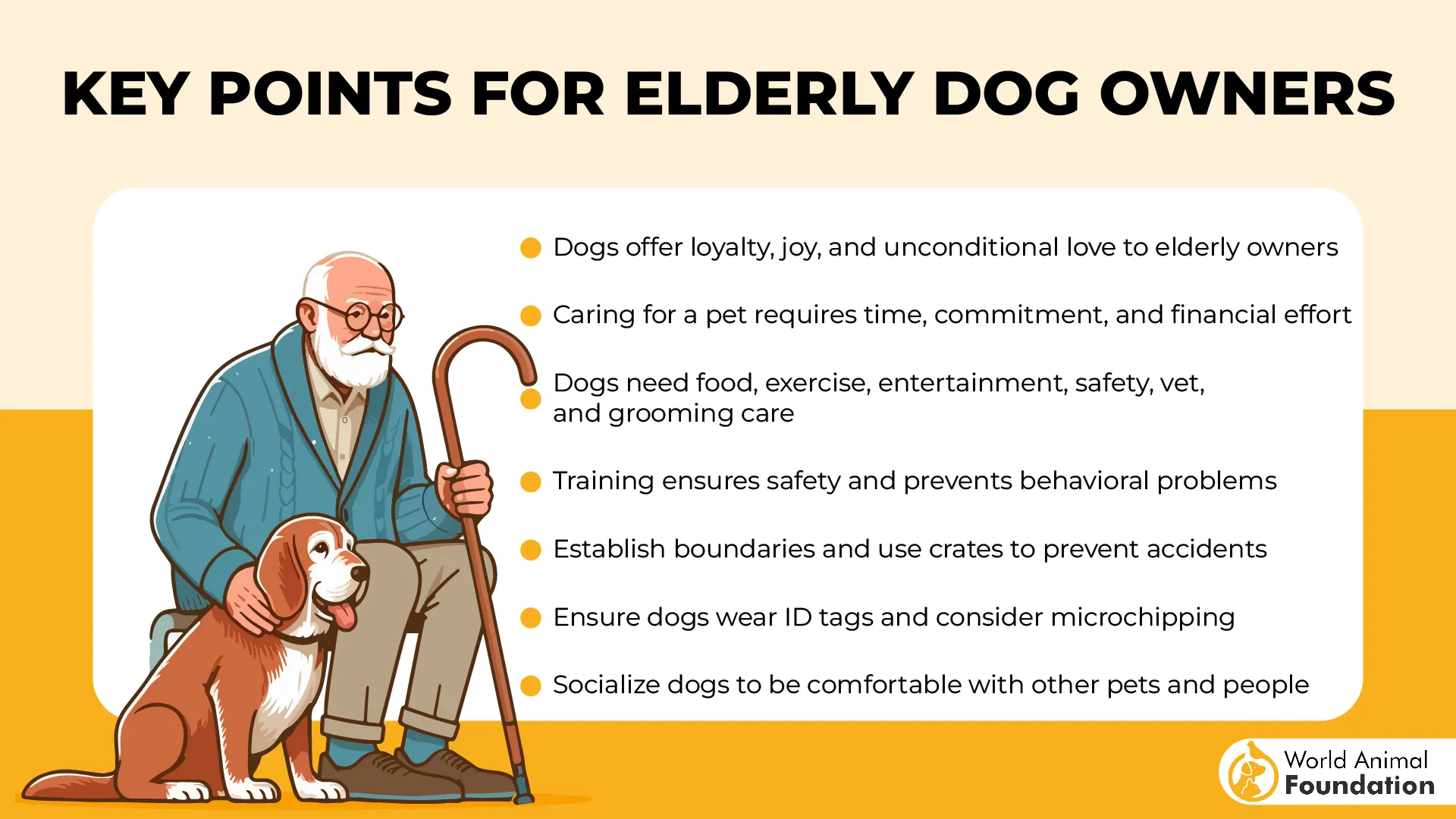
Their short, smooth coat requires minimal grooming, and their calm energy level fits perfectly into the senior living communities’ slower rhythm of retirement life.
Because of their short muzzle, French Bulldogs should avoid strenuous activity or extreme cold weather, but short daily walks and indoor play sessions keep them happy and healthy. Their moderate exercise needs make them ideal for those with limited mobility.
Fun Fact: American breeders helped define the French Bulldog’s iconic upright “bat ears,” distinguishing the breed from its English relatives and giving it its signature look.
6. Cavalier King Charles Spaniel
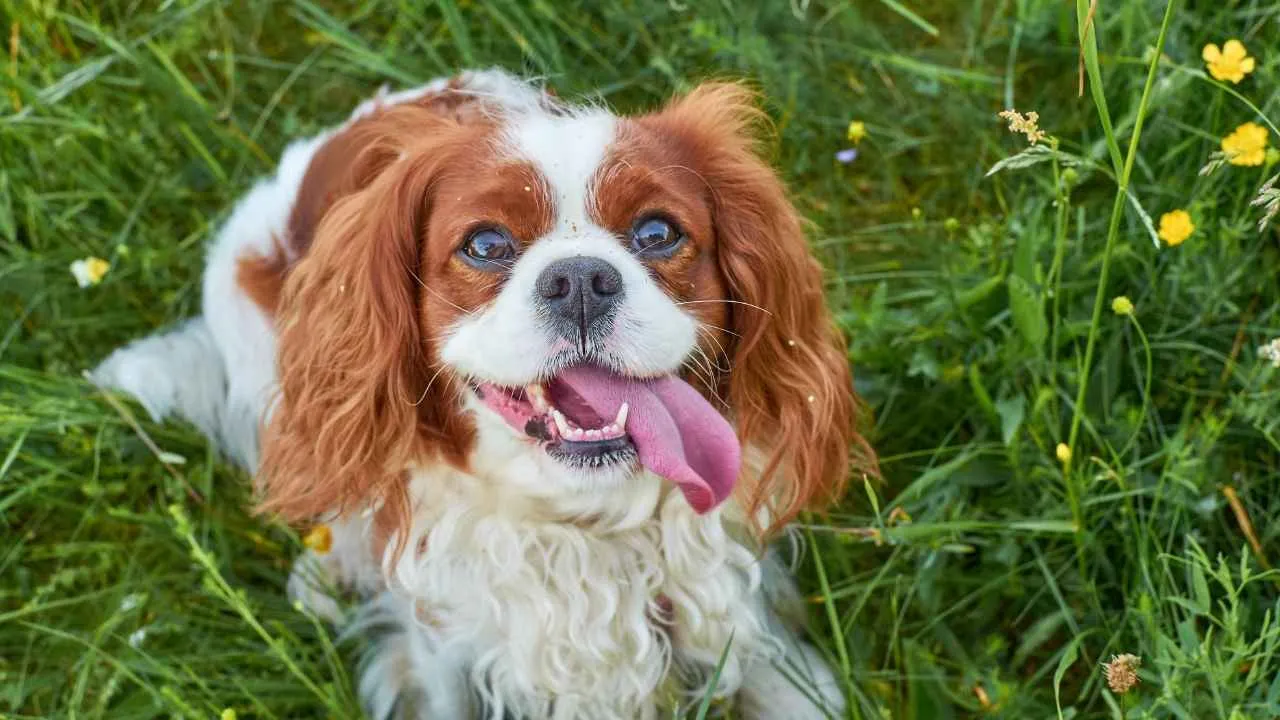
The Cavalier King Charles Spaniel, also called the “Cavalier” or “Royal Spaniel,” is a graceful toy breed cherished for its expressive eyes and gentle demeanor. Originating from England, this small yet elegant dog thrives on companionship and adapts effortlessly to the calm rhythm of senior living.
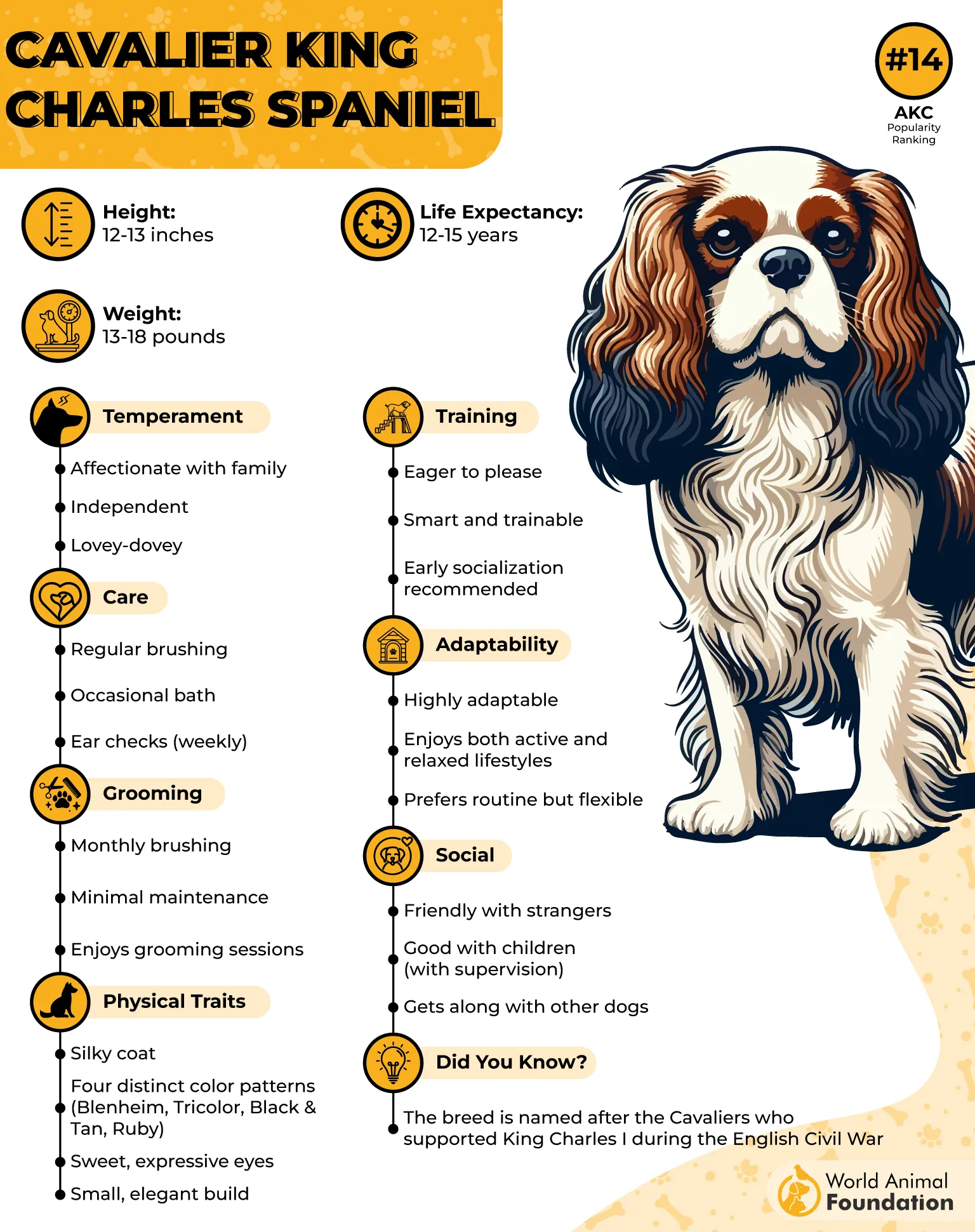
Ideal for retirement communities, the Cavalier combines affectionate warmth with a manageable temperament.
They enjoy short strolls or relaxed afternoons indoors, happily matching their owner’s activity level. Their friendly nature extends to both other pets and visitors, making them a peaceful presence in shared spaces.
These dogs are intelligent and eager to please, responding well to positive reinforcement and mild guidance—perfect for seniors seeking an intuitive and well-mannered companion. Regular brushing keeps their silky coat gleaming, while routine ear cleaning prevents discomfort.
Fun Fact: Named after King Charles II, Cavaliers were once royal favorites who accompanied the monarch everywhere—from court meetings to the castle gardens—earning them a timeless reputation as loyal and loving lapdogs.
7. Toy Poodle
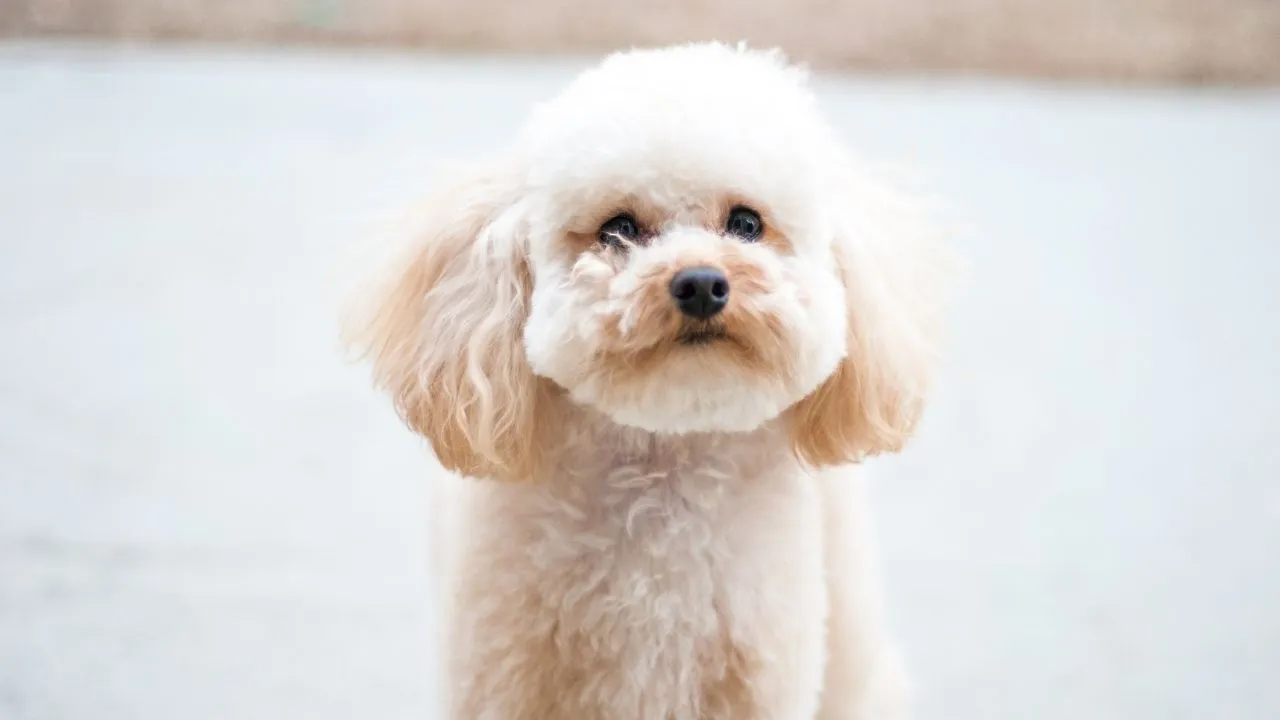
The Toy Poodle, often affectionately called the “mini aristocrat,” is the smallest of the Poodle varieties, admired for its intelligence, grace, and hypoallergenic coat.
With its dense, curly fur and bright eyes, this elegant breed combines beauty with brilliance. Known for their adaptability, Toy Poodles thrive in both cozy apartments and senior living communities where calm companionship is valued.
For older adults, this breed offers more than charm—it brings emotional warmth and ease of care. Their compact size makes them manageable, while their loyalty ensures constant companionship without being overwhelming. They bond quickly and thrive in environments filled with routine, affection, and light daily activity.
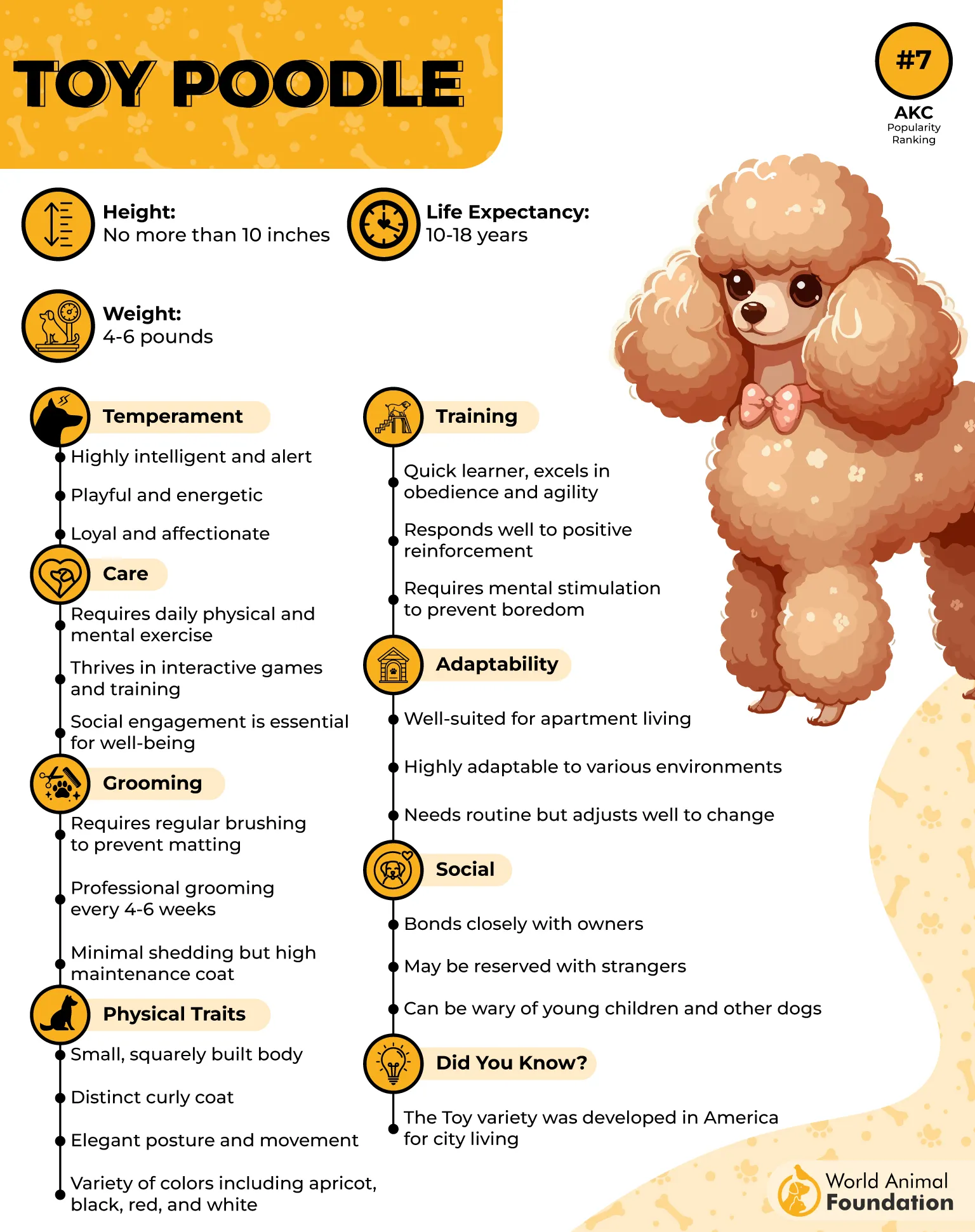
Toy Poodles are also ideal for pet owners with allergies. Their non-shedding coat and minimal grooming needs—with occasional professional grooming—keep them looking pristine and feeling comfortable. Mental stimulation, such as short play sessions or gentle walks, keeps them content and alert.
Fun Fact: Though believed to have originated in Germany, the Poodle is recognized as the national dog of France, a symbol of elegance and intelligence.
Conclusion
For seniors seeking companionship, the best dog breeds for senior living communities offer warmth, loyalty, and comfort in every wag. From small dogs like the Bichon Frise—an affectionate dog known for its gentle nature and minimal grooming needs—to intelligent dogs that easily adapt to calm environments, these companions enhance daily life with joy and purpose. While some may require occasional professional grooming, their loving temperaments and devotion make them worth every bit of care.
Dog ownership has been shown to improve well-being among older pet owners, promoting activity and social interaction through simple routines or walks with dog walkers. Whether adopting from local shelters or exploring other breeds with friendly dog personalities, seniors can find a faithful friend to match their pace. These dogs don’t just fill the home with companionship—they offer comfort, laughter, and unconditional love, enriching life in senior communities with every shared moment.


